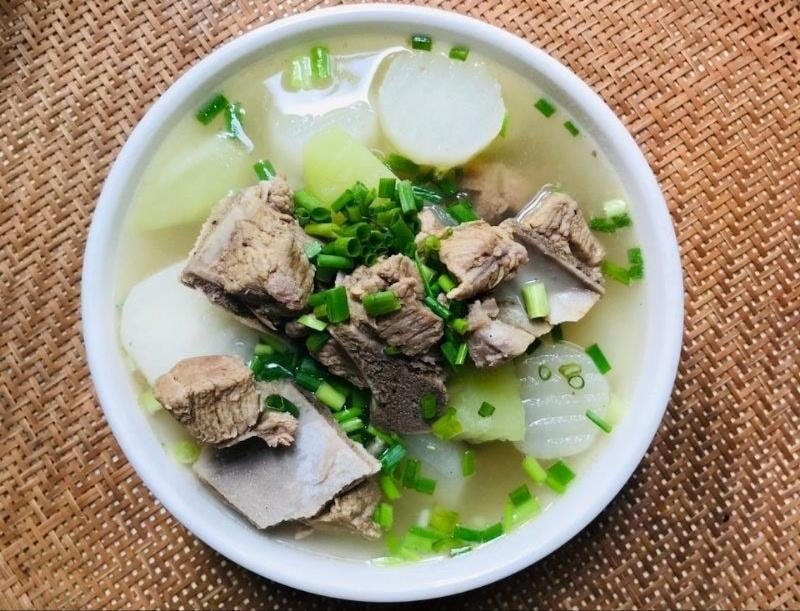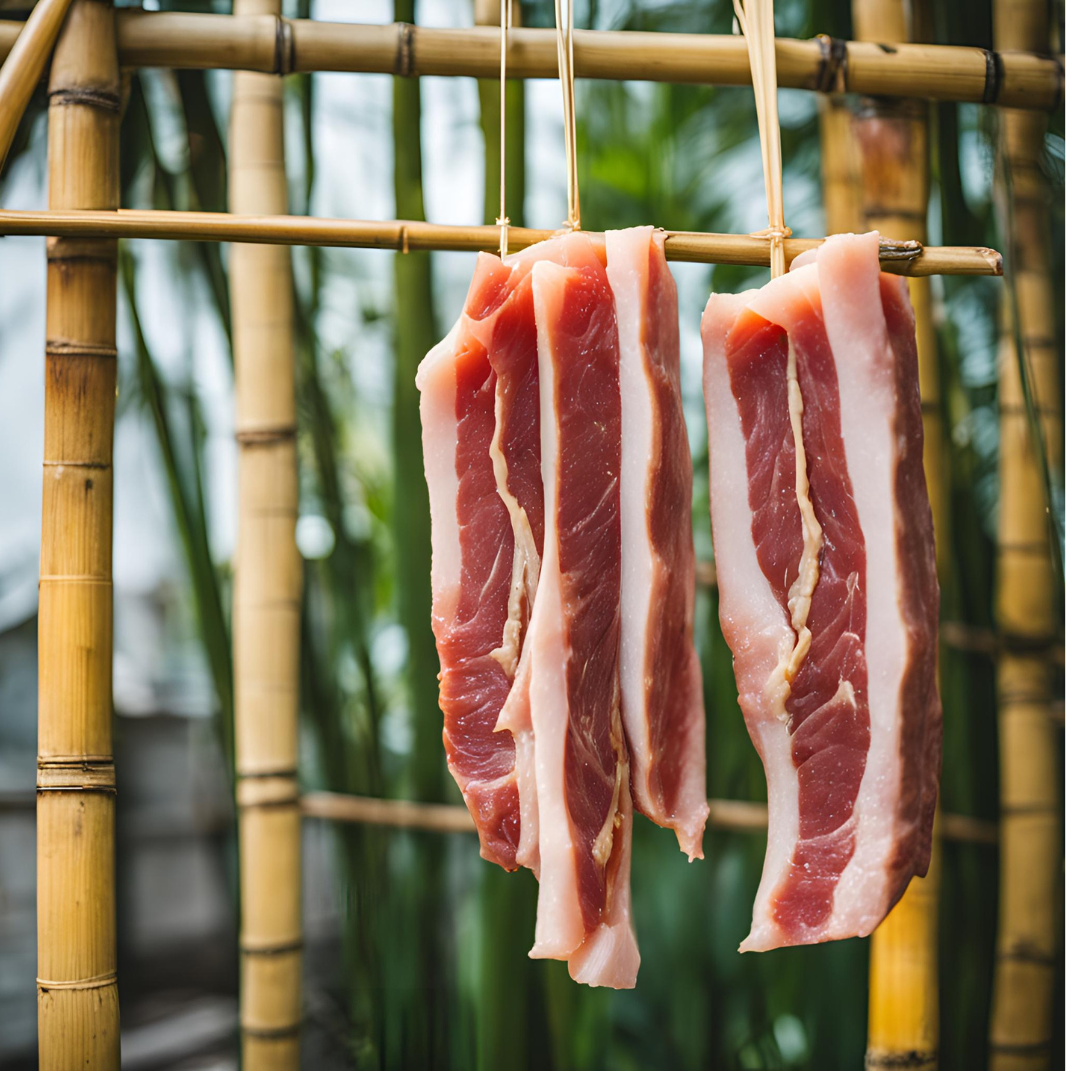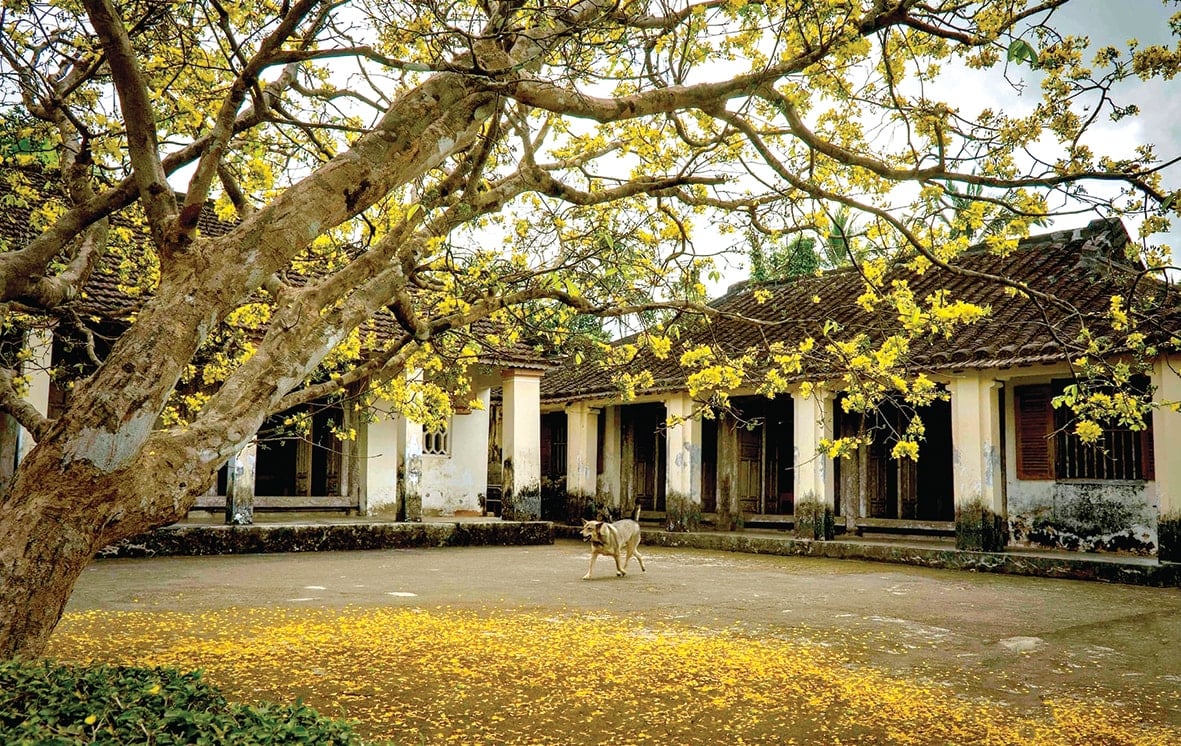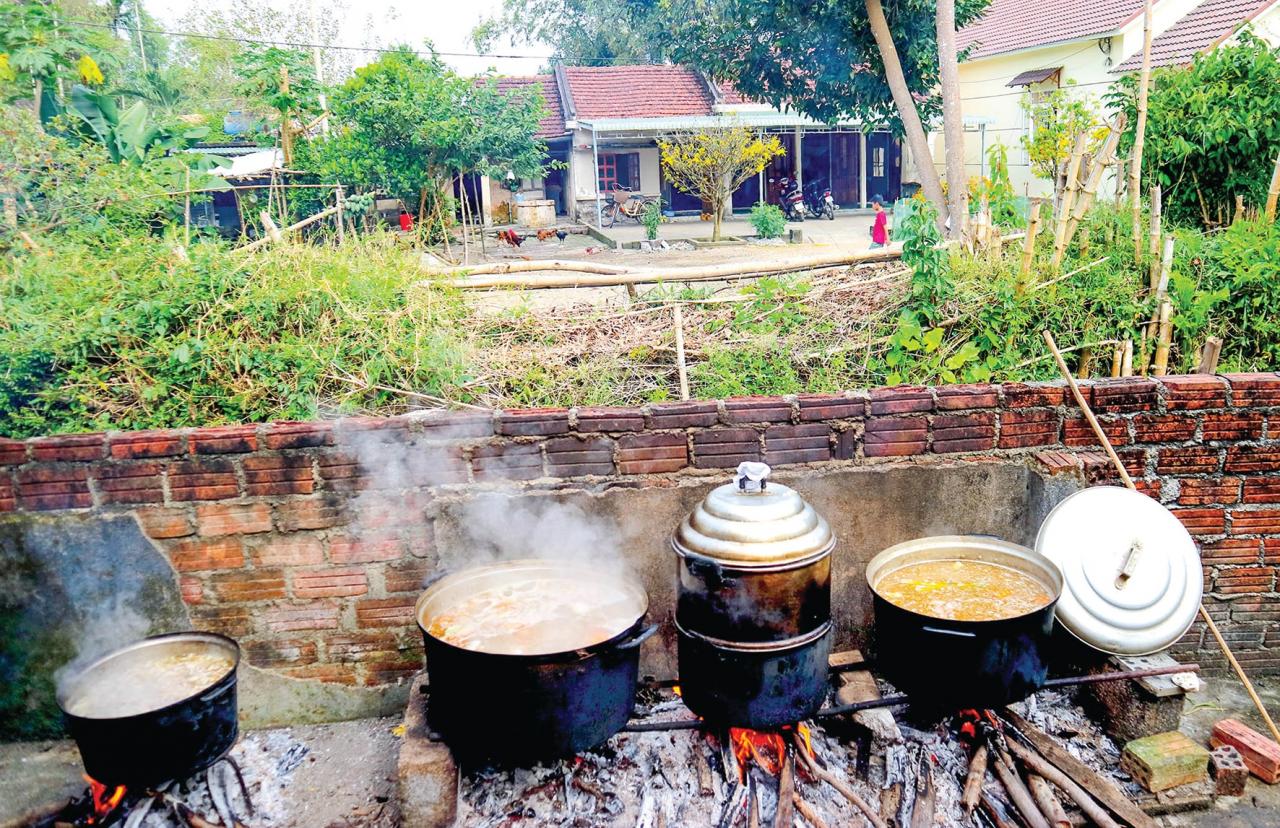
In the middle of the city during the days of December, people and vehicles are bustling on the streets, they are shopping, taking advantage of every hour to prepare for the three days of Tet. Everyone wants to buy a lot of food to stock up, especially pork from the countryside to bring to the city.
In that hustle and bustle, I miss my mother, miss the poor village in the days before Tet. Especially miss the pieces of salted pork wrapped in areca leaves hanging over the family stove, for the whole family to eat during Tet.
If Tet came without some fragrant meat wrapped in areca leaves on the stove, to eat gradually until the full moon of January, then the Tet of our childhood would be so tasteless.

In my immature childhood memory, my mother had been preparing for Tet since the middle of the tenth lunar month. As scheduled, after the day of the grave-sweeping ceremony in my hometown, the families in my neighborhood would pool money to put down a deposit on a piggy bank belonging to another family in the neighborhood.
Pigs are fed with sweet potato leaves cooked with bran and banana trees, so the meat is very fragrant. Usually four people share a pig, each family gets one leg. The richer family with more people gets two legs.
Each part has both bones and meat and pig's feet. On Tet holiday, my mother often cooks green banana soup with bones and pig's feet. This grape-colored banana soup from Quang Nam is not known or eaten everywhere.

After dividing the meat, the whole village sat around a round tray, busy cooking a pot of porridge with offal from a makeshift stove made of bricks.
The pot of porridge was steaming and boiling beside the fire made of huge logs and glowing red coals. The sisters' mothers served it for the whole neighborhood to eat together happily and warmly.
As for the pork, my mother brought it home and cut it into pieces about the length of a hand, the size of two adult fingers, marinated it with spices, then put it in areca leaves, tied it up and hung it on the rack. So the flavor of Tet filled my family's kitchen during the days before Tet.
How many springs have passed in my life, yet the taste of boiled pork taken from the areca spathe still lingers in my mind. Every meal, my mother opens the bundle of meat, takes out one or two pieces, washes them, seasones them, and puts them in the pot to boil.
Just by putting the meat into the pot of boiling water, I could smell the aroma spreading throughout the family kitchen. I still remember clearly the pink color of the meat taken out of the areca spathe, after boiling it still retained that special light pink color.
The thinly sliced meat was displayed on the plate and seemed to be alive with a very unique, indescribable color. The aroma seemed to be concentrated in the meat wrapped in areca leaves that my mother had made that day, unforgettable.

We grew up, left the village for the city, and entered the world. Each of us went our separate ways. For me, there are still many images in my childhood memories, but the image of my mother sitting diligently marinating meat and carefully wrapping each piece of meat so that we could have delicious meals marinated with the flavor of our homeland is one of the memories that will always be deeply imprinted in my childhood.
I miss my mother and crave to eat the poor but loving dish of meat wrapped in areca leaves of my family during the three days of Tet. The simple, rustic, and genuine flavor of this dish carries the character and rustic image of the origin of the people of my hometown Quang since time immemorial…
Source: https://baoquangnam.vn/thit-heo-bo-mo-cau-vi-xua-tet-cu-3148232.html


![[Photo] Phuc Tho mulberry season – Sweet fruit from green agriculture](https://vstatic.vietnam.vn/vietnam/resource/IMAGE/2025/4/10/1710a51d63c84a5a92de1b9b4caaf3e5)


![[Photo] Prime Minister Pham Minh Chinh chairs meeting to discuss tax solutions for Vietnam's import and export goods](https://vstatic.vietnam.vn/vietnam/resource/IMAGE/2025/4/10/19b9ed81ca2940b79fb8a0b9ccef539a)
![[Photo] Unique folk games at Chuong Village Festival](https://vstatic.vietnam.vn/vietnam/resource/IMAGE/2025/4/10/cff805a06fdd443b9474c017f98075a4)























































































Comment (0)